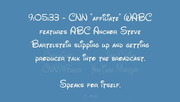
No sparks or explosions, nothing to push on. Rockets cannot work in the vacuum of space.
YOUTUBE WON'T LET ME APPROVE COMMENTS. In general, start new threads. YT autospams supportive comments.
The shills had several months to find errors in this videos description. Instead, they constantly tried to raise other topics, leaving the description unchallenged. In the process, the topics of whether liquid O and liquid H can even explode in space and how one might initiate an explosion in space were raised. This amended description addresses those new topics. All are requested to find errors and expose them.
We are told that, in space, the apollo 11 rocket used liquid O and liquid H fuel. The fuel and oxidizer were sprayed into the center of the permanently open combustion chamber from a circular set of nozzles toward electrodes that created sparks, splitting the H2 into free H and the O2 into free O. The free O then oxidized the free H, creating heat and water vapor. The heat expanded the gases (including any ambient air) in the chamber which pushed against the chamber wall and accelerated the ship.
None of that works.
First, the vacuum of space is a perfect insulator; no sparks are possible. Until 2 electrodes touch in the vacuum of space, no current can pass between them and, when they do touch, they merely close the circuit without a spark. For those skeptics out there, look up the details of a mercury switch and find out why it doesn't spark!
2nd, liquid oxygen and liquid hydrogen cannot exist in the vacuum of space. Thanks to the permanently open hole of the combustion chamber, they immediately become gases that expand to fill the infinity of space (Boyle's law). So, even if a spark were possible, the gases would escape the chamber without ever igniting.
Finally, if the gases could be ignited, when the gases expand to hit the wall of the combustion chamber, the lower inertia burning gas (essentially zero) would be moved out of the combustion chamber with little to no effect on the acceleration of the ship. We can see this process at work watching a rocket from blast off to cut off; as the rocket climbs and the air pressure decreases, the exhaust flame gets longer and longer. There is less air pressure to keep the force of the explosion inside the combustion chamber, so more of the combustion occurs outside the chamber, creating a great visual show and no acceleration.
The burning fuel mass seen burning outside the combustion chamber in any lift off video is clearly not part of the ship and, thus, cannot contribute to a mass from mass acceleration of the ship it didn't accelerate from.
If an explosion of liquid O and liquid H were possible, water vapor would be created in the permanently open combustion chamber. Water vapor, like all gases, would obey Boyle's law and immediately expand to fill the infinity of space.
Rockets working in the vacuum of space was first proposed by Prof Goddard of Clark College (Smithsonian Miscellaneous Collections, v71, N2, 1919). He was working for the military. The New York Times, accurately trashed him on January 13, 1920 (p12, col5) in a "Topic of the Times" editorial (the Rice University archive was removed in 2008). As the New York Times became more and more the official propagandist of repressive government, they retracted the editorial in 1969. Goddard's proposal was based only on solid propellants.
quintinohthree correctly said the J-2 rocket was the 3rd stage, not the CSM. The 3rd stage was putatively used to take apollo 11 out of earth orbit and send it to the moon. All comments are pertinent. I'll continue to use the J-2 rocket here.
http://heiwaco.tripod.com/moontravel.htm
The most published apollo image
Cover of NASA SP-350, Apollo Expeditions to the Moon (1975)
is an admitted NASA fake.
At
http://www.hq.nasa.gov/alsj/a11/a11-5...
NASA discusses the fake. You will notice that NASA fails to mention the covers of National Geographic, Life Magazine and thousands of newspapers and other media around the world hoaxed by their admitted faked man on the moon picture. NASA admits they originated the apollo fake they say was taken by apollo astronaut neil armstrong of apollo astronaut buzz aldrin on the surface of the moon on July 20, 1969. As late as 2007 National Geographic produced a poster of the apollo image attributing the apollo image, as if it was the real McCoy, to NASA.
http://www.hq.nasa.gov/alsj/a11/a11-5...
does not mention that the image was rotated as well for publication. According to GoneToPlaid in his video
http://www.youtube.com/watch?v=q07Xrs...
(removed from YouTube, sorry)
The original scan was not cropped at the edge of aldrin's helmet. It was rotated 0.6 degrees. Really, why would NASA feel that 0.6 degrees rotation was needed for publication? And, why didn't they reveal that in
http://www.hq.nasa.gov/alsj/a11/a11-5...
For 9/11 truth, Joe Craine, YouTube Martyr
Stars cannot be seen from space
http://www.youtube.com/watch?v=MX42yy...

:48

2:04

1:48

:27

1:34

1:36

2:23